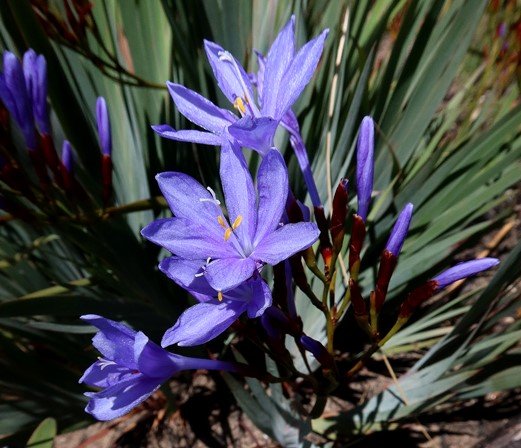Nivenia stokoei flowers

Author: Ivan Lätti
Photographer: MC Botha
The white, three-branched styles of these Nivenia stokoei flowers are much taller than their three stamens topped with oblong, yellow anthers. In some flowers of this species the arrangement is reversed, all in pursuit of favouring cross-pollination over self-pollination.
Cross-pollination is the transfer and deposition of a pollen grain from an anther of one flower to the stigma of another flower of the same species on another plant. Self-pollination is the deposition of pollen grains onto the stigma of the same flower or flowers of the same plant.
When it’s cold and pollinators are inactive, self-pollination may become the backup strategy, better than no pollination. Wind-pollinated flowers generally lack colour, odour, or nectar, their stigmas arranged for optimising the capture of airborne pollen. Self-pollination happens freely in plants like orchids, sunflowers, peas, peanuts, oats, wheat, peaches and potatoes (Bean and Johns, 2005; Capon, 2005; iNaturalist; Wikipedia).

